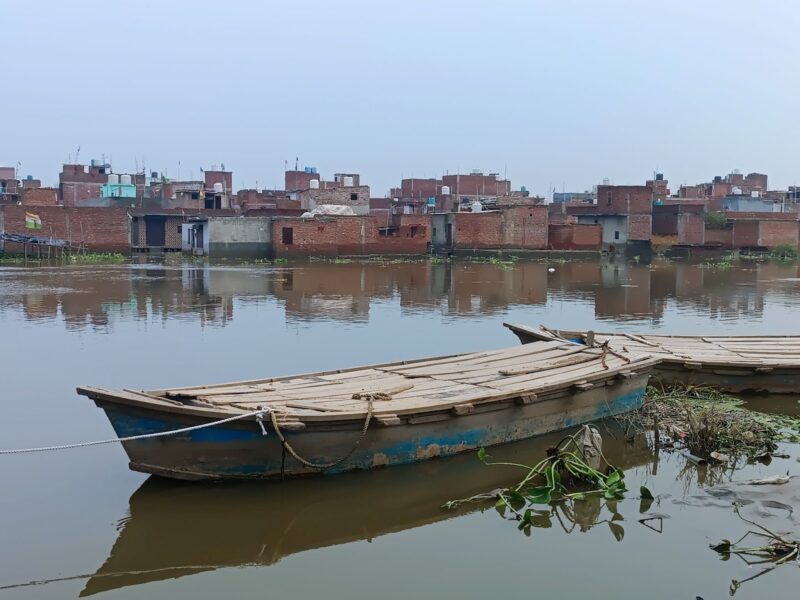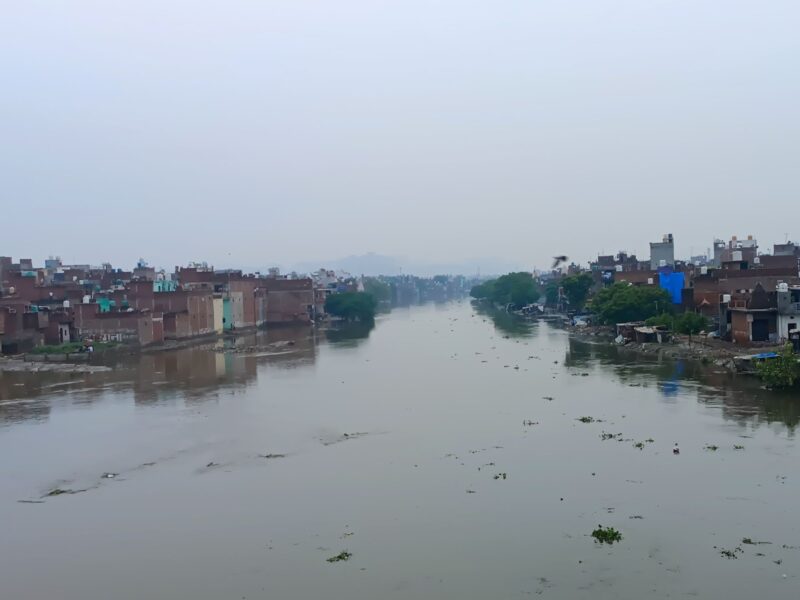Sitting inside a classroom of RS International School, which recently got turned into a relief camp, Jitendra, a 40-year-old daily wage labourer, looked tired with questions running through his head. For over 10-years, he has been living in Chotpur colony, which is barely 100 m away from Hindon river- a tributary of Yamuna.
“We always saw it as a big drain. The water level used to rise a bit in the monsoon. But it never reached our houses,” he says when he was asked about his house.
On July 22, the water level started rising rapidly. “Initially, the water came till our door steps. A day later, it started entering our houses. We took our belongings and left with the family,” explained Jitendra.
He lives in a two-storey house with his family of 17 people.
By July 24, Hindon’s water even reached residential societies of Noida.
The Yamuna tributary flows from UP’s Saharanpur to Ghaziabad and Greater Noida, to the Gautam Buddh Nagar, bordering Delhi.
The 300 km long river passes through and provides water to millions of people living in the 400 villages situated along its banks. However, near Ghaziabad and Gautam Budh Nagar (Noida), the river transforms more into a long drainage due to release of effluents from nearby industrial areas.

Of these, over 400 villages, 10 villages which lie in the Ghaziabad and Gautam Budh Nagar (Noida) were inundated by July 23. The flooding in Hindon was unlike other floods. The perennial river turns into a massive drain near these villages. Thus, the flood water carried silt, toxic waste and sewage in the villages.
Jitendra told Patriot that he has been living in the relief camp for over five days. He hopes to go back to his house with family as soon as the water recedes. His story is echoed by over 200 men and women living in the relief camp managed by an NGO.
“When the water level started rising, with the help from other NGO’s and the administration, we turned this school into a relief camp,” says Atul Yadav, Yuva Kranti Sanstha, a local NGO. There are over 10-12 such relief camps in the area with over nine thousand flood affected victims living in the relief camp, he adds.
Earlier on July 24, Hindon crossed the dangerous 201 m mark . The water reached some 200 m inside the villages near the floodplain. Locals claim that in some low-lying regions, it reached even till 500 m displacing over 3 thousand villagers. The last time a situation like this emerged was 45 years ago when Hindon river flooded in 1978. The increase in water level came as a surprise for the villages.

The flooded villages are close to Ghaziabad and Noida industrial area. Thus, many workers, who work in the nearby factories, have over the time settled over the Hindon floodplains. At a few points, the houses are built, less than five meters away from the river.
“Many people have left their homes here. Some have either moved to their relative’s house in the safer region or have gone back to their villages,” said Sonu Yadav standing near the flooding Hindon.
About 17 km long floodplain of Hindon lies in Ghaziabad and Noida. This stretch is heavily encroached with small houses built at times over the edge of the river. Jitendra’s house is also one such house.

“When we came here, they [real-estate dealer] said it was just a drain. One can legally live here,” he explains. Many migrants like him, end up living over the floodplains, due to cheap land availability.
“Every city has this issue. Most of the people living on the floodplain are migrant wage labourers, e-rickshaw drivers or those who earn below 10 thousand. These people can’t afford land in planned cities like Noida. Hence, they settled here,” said Yadav.
In the past two decades, several migrants like him have been manipulated by local strongmen and property dealers, selling cheap property on floodplains of Hindon. This gives an alternative to migrants in an otherwise expensive market.





